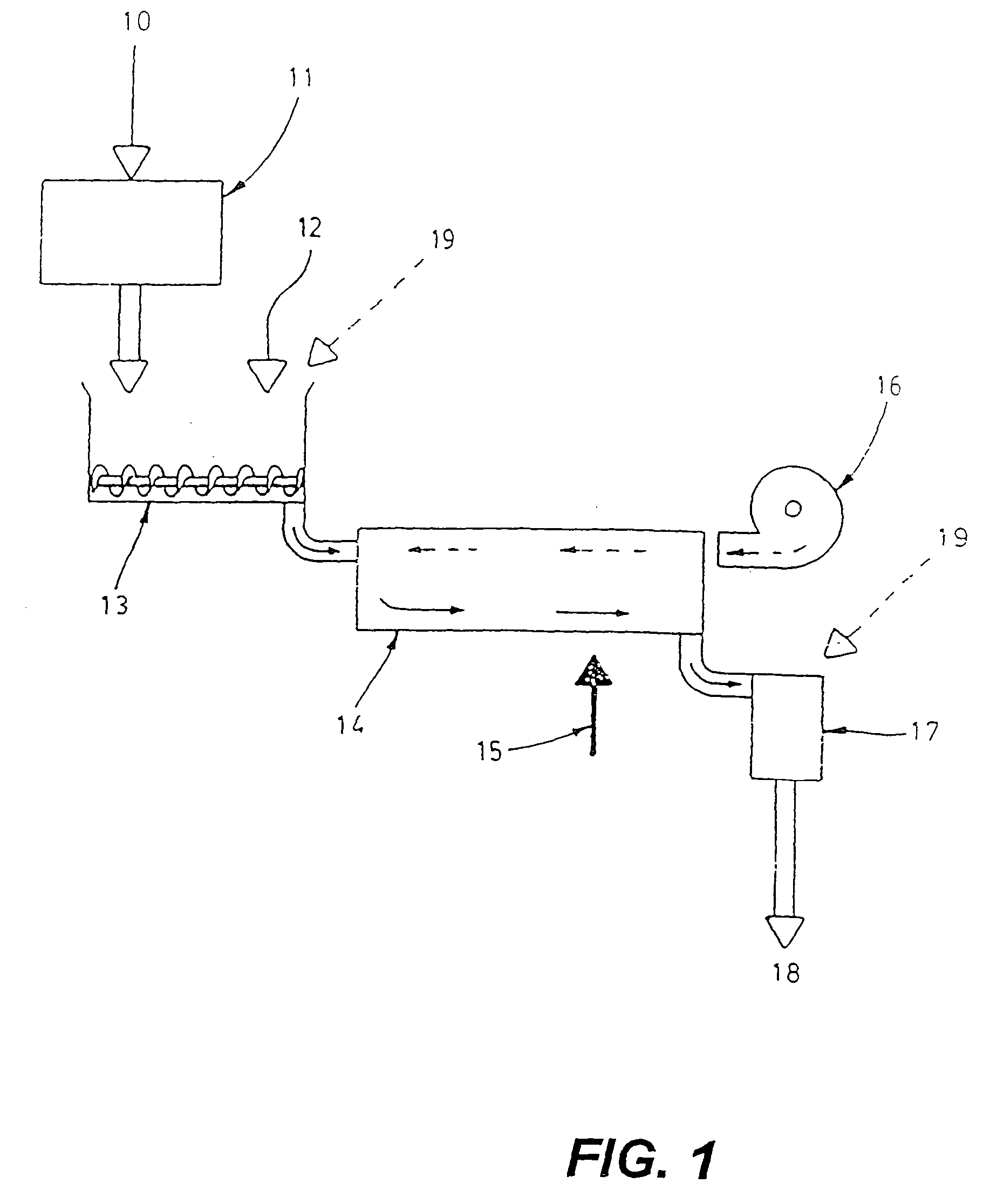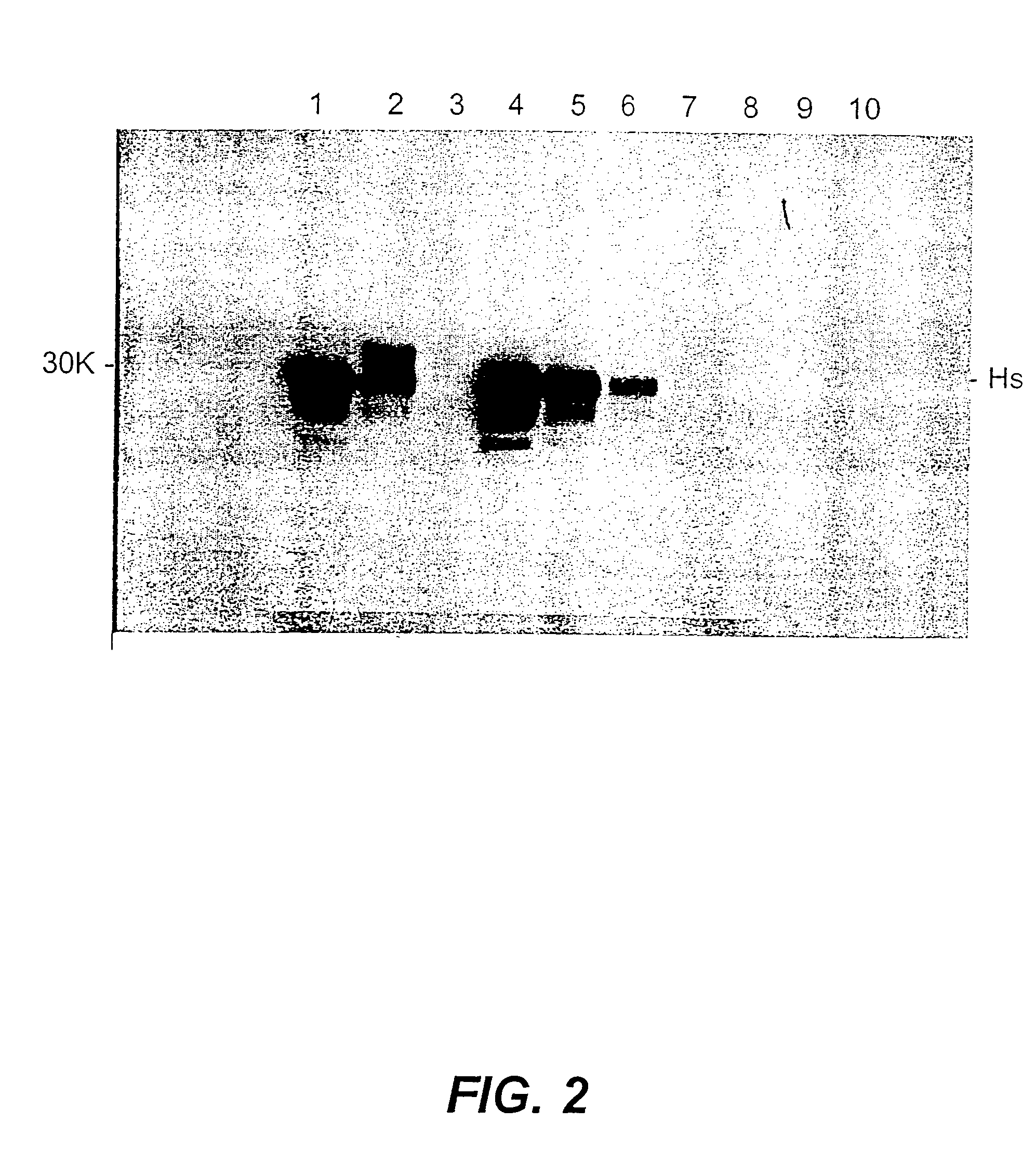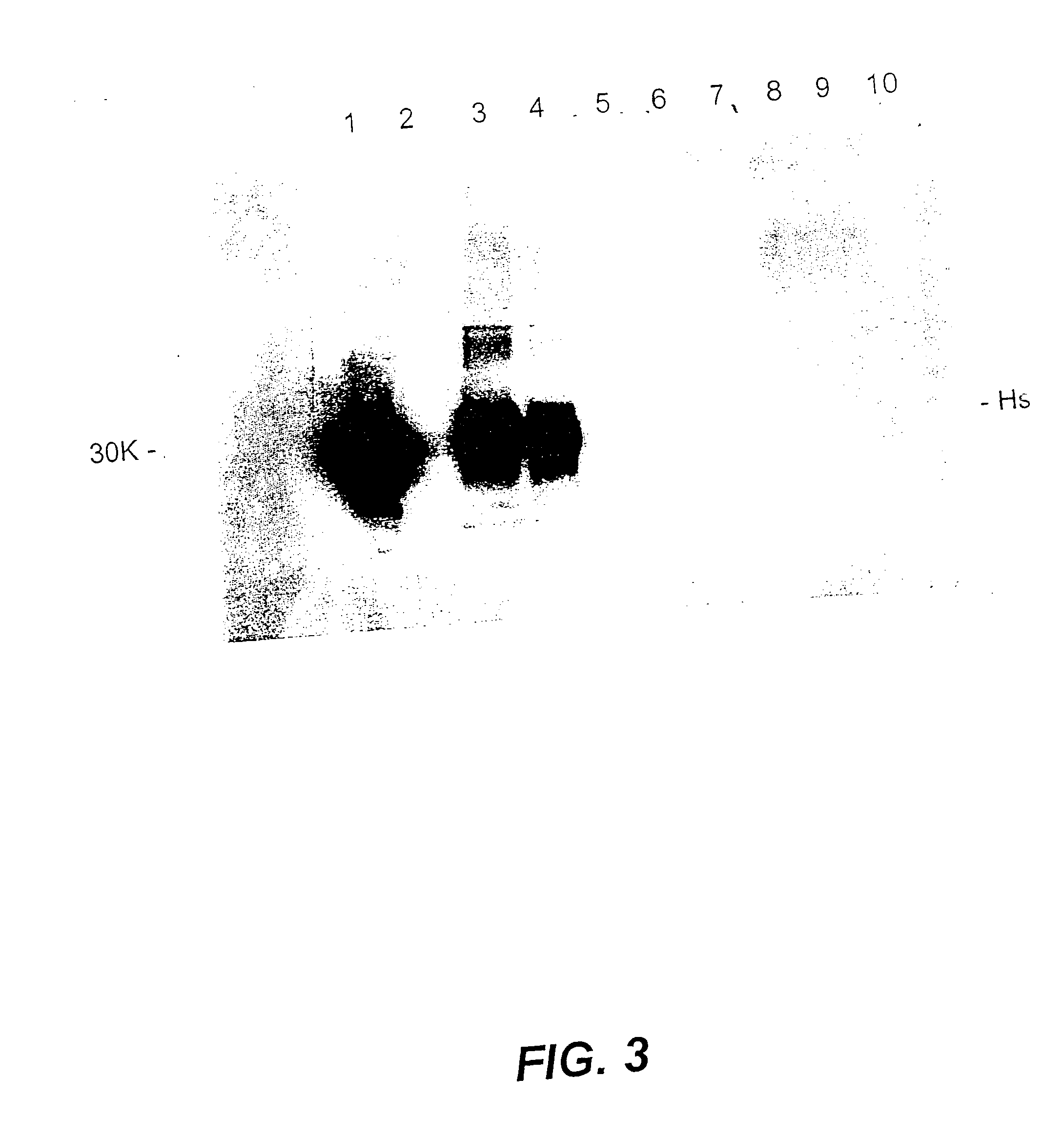Decontamination of animal feed containing prion (eg bse agent)
- Summary
- Abstract
- Description
- Claims
- Application Information
AI Technical Summary
Benefits of technology
Problems solved by technology
Method used
Image
Examples
example 2
[0101] Preliminary tests were performed to investigate the stability of pH following treatment of meat material.
[0102] A 5% solution of calcium hydroxide was adjusted to pH 12.0 using hydrochloric acid. 20 mL of this solution was then added to 10 g minced lean beef and the sample mixed thoroughly. The pH was measured and then monitored over about 85 minutes during which time the pH remained at 12.0.
[0103] Similarly, 5% calcium hydroxide was adjusted to pH 10.5 and 20 mL was throughly mixed with 10 g minced lean beef. The initial pH was 5.4 and this was adjusted to pH 10.5 by further addition of calcium hydroxide. The pH then fell over the next 25 minutes to pH 10.3.
example 3
[0104] Two 10 g aliquots of minced silverside were placed into individual metal beakers and each aliquot spiked with 1 mL of 263K hamster scrapie crude brain homogenate (cHs). 20 mL of calcium hydroxide at pH 12.0 was then added to each beaker, the samples mixed thoroughly and the pH measured as pH 12.0 for both samples. The beakers were then covered with foil and incubated at 75.degree. C. for a total of 3 or 6 hrs (2 or 5 hrs in a waterbath, respectively, with the final 1 hr in an oven).
[0105] Four 10 g aliquots of minced silverside were placed into individual metal beakers and each aliquot spiked with 1 mL of 263K hamster scrapie crude brain homogenate (cHs). 18 mL of calcium hydroxide at pH 10.5 was then added to each beaker, the samples mixed thoroughly and the pH adjusted to pH 10.5 (with calcium hydroxide) for all samples. The beakers were then covered with foil and incubated at 60.degree. C. for a total of 3 hrs, 75.degree. C. for a total of 3 or 6 hrs or 90.degree. C. for 3...
PUM
 Login to View More
Login to View More Abstract
Description
Claims
Application Information
 Login to View More
Login to View More - R&D
- Intellectual Property
- Life Sciences
- Materials
- Tech Scout
- Unparalleled Data Quality
- Higher Quality Content
- 60% Fewer Hallucinations
Browse by: Latest US Patents, China's latest patents, Technical Efficacy Thesaurus, Application Domain, Technology Topic, Popular Technical Reports.
© 2025 PatSnap. All rights reserved.Legal|Privacy policy|Modern Slavery Act Transparency Statement|Sitemap|About US| Contact US: help@patsnap.com



